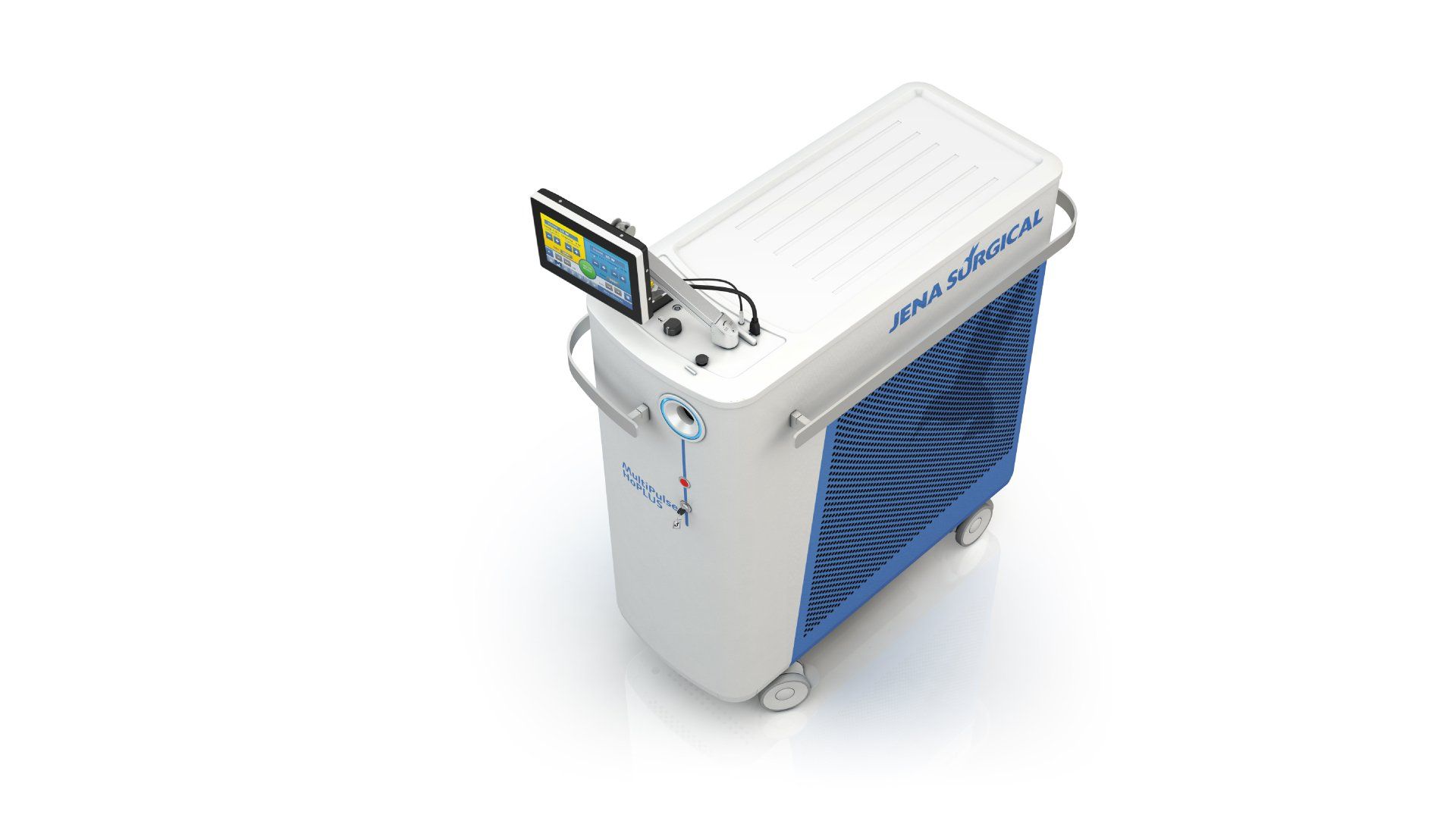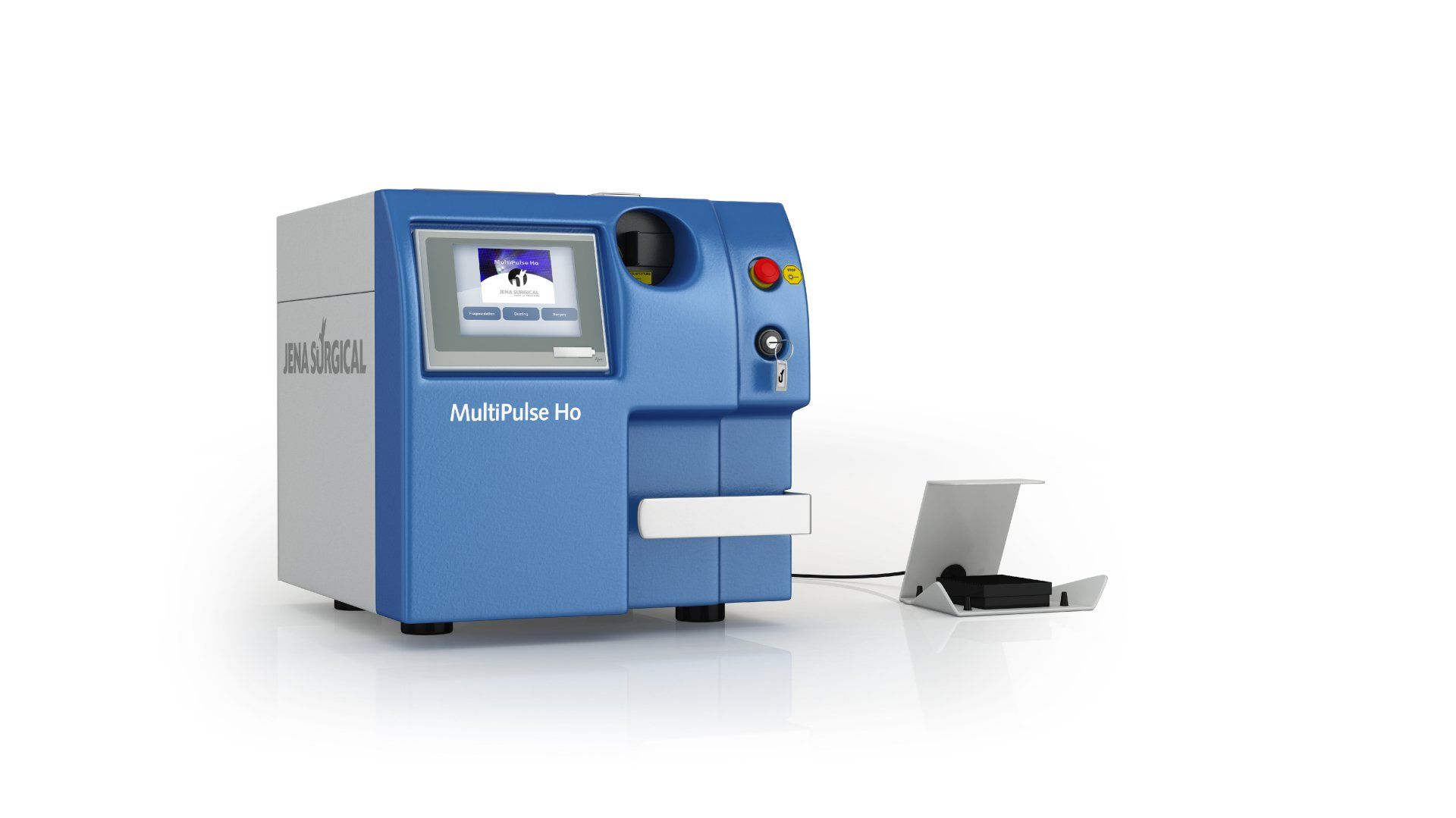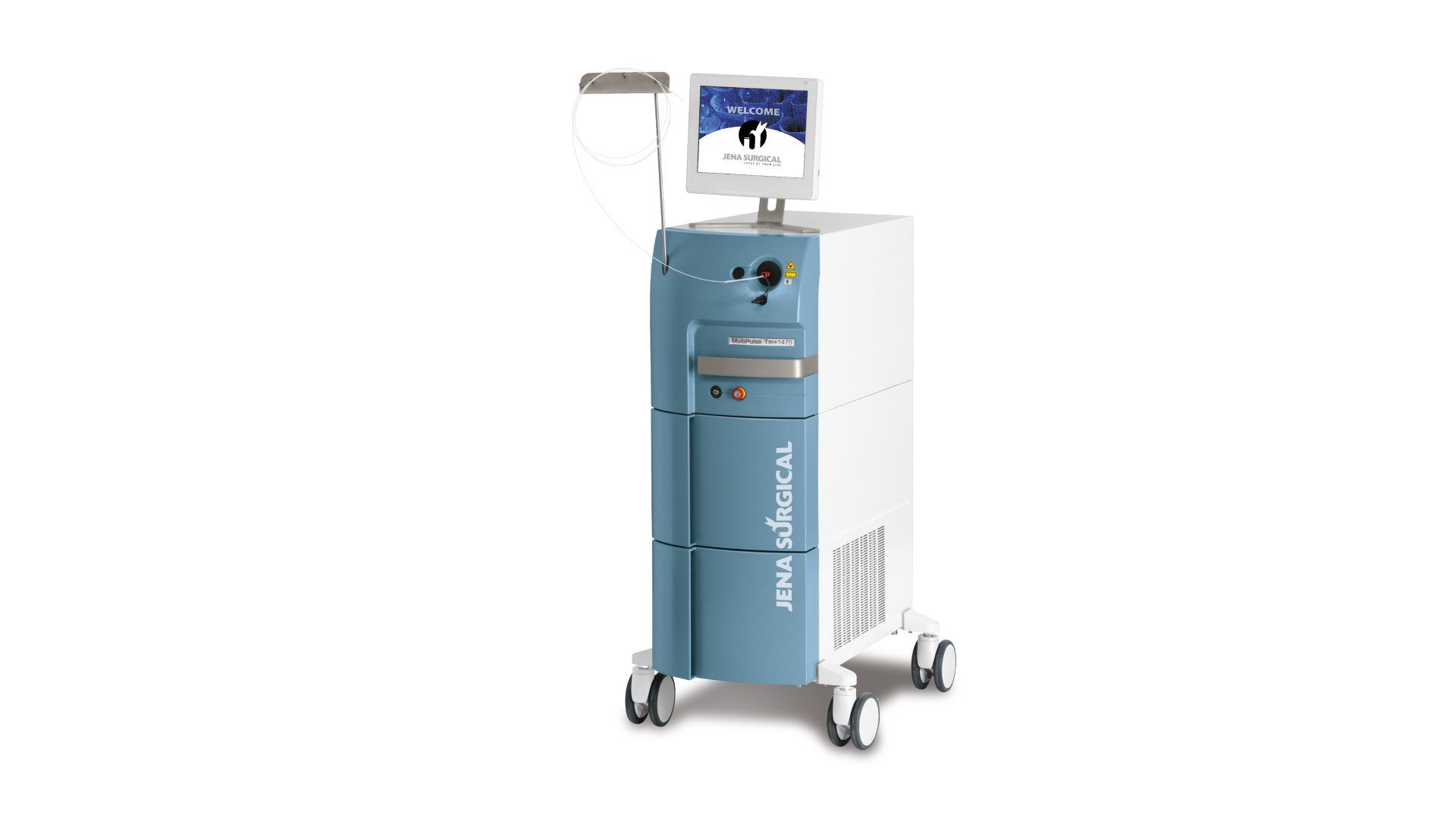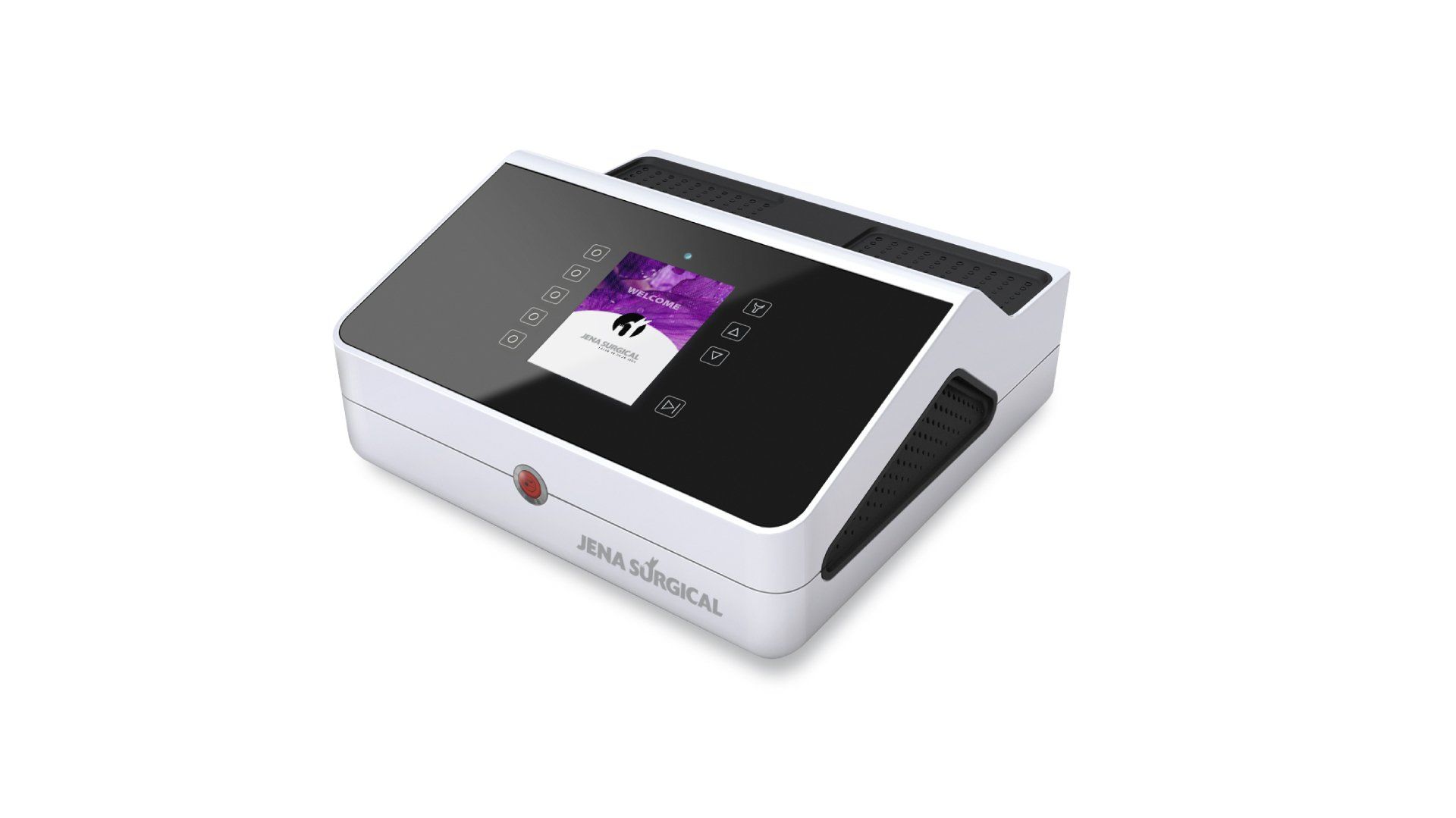UROLOGY
The continuous progress in surgical lasers with fiber optics, combined with the widespread use of miniaturized endoscopic instruments able to go where a hand or scalpel could never reach, makes laser surgery the best support for the urologist and for the development of endourology.
Especially holmium and thulium lasers offer advanced performance with a lower intraoperative bleeding risk and shorter hospital stays and catheterization of patients,making endoscopic procedures safer and less invasive than traditional surgical techniques and open surgery.
Endosurgical laser treatments for BPH
BPH (Benign Prostatic Hyperplasia) – The laser has been used since the 80s for the treatment of BPH: after several evolutions of laser sources and surgical techniques, today the holmium laser and the more recent latest generation thulium laser, are the most advanced technology and high performance tools for endoscopic prostatectomy procedures.
In the beginning the pulsed Ho:YAG laser, with its wavelength of 2,100 nm (well absorbed by the water contained in tissues), was used for the vaporization of the prostate, through HoLAP (Holmium Laser Ablation of the Prostate), an ablation procedure that is easy to learn but does not produce great results, especially for large prostates. Subsequently, HoLEP (Holmium Laser Enucleation of the Prostate) was developed: an enucleation technique that, with the help of the morcellator, enables treatment of BPH, regardless of the size of the adenomas. In recent years, a new laser source has gained popularity after holmium: the thulium laser. The arrival of the second generation of 1.9 µm Thulium laser, combined with a 1,470 nm raman, helped further spread the use of ThuLEP (Thulium Laser Enucleation of the Prostate)
Endoscopic Lithotripsy and Treatments for Stones in the Urinary System
Even for the surgical treatment of urinary tract stones, the development of holmium lasers has offered safer and minimally invasive alternatives compared to traditional lithotripsy techniques.
Due to this, the Asclepion Laser Technologies GmbH product range includes holmium systems with fiber sets specially developed for laser endoscopic lithotripsy such as MultiPulse Ho (35 W) and MultiPulse HoPLUS (140 W), which support urological surgery for the treatment of a wider range of diseases.
The various lithotripsy techniques are used from time to time according to the shape, size, chemical composition and the anatomical location of the stone to be treated. The patient’s symptoms and condition such as the presence of stenosis of the urinary tract are two other important criteria for choosing the procedure. The major advantages of using a Ho:YAG laser source like the one supplied with MultiPulse Ho and MultiPulse HoPLUS consist of high efficiency for all types of stones and the low percentage of migration and retrograde propulsion of fragments treated.
Urethral Stricture
The development of more effective and long-lasting treatments for urethral stricture, using minimally invasive and safe procedures, continues to be an important research area. These fibrotic strictures of the urethra, resulting from spongiofibrosis originating from different causes such as inflammation or trauma, can now be quickly and effectively treated with thulium or holmium laser urethrotomy using MultiPulse Ho, MultiPulse HoPLUS or MultiPulse Tm+1470. The use of the laser is suitable for short urethral strictures as well as for more significant strictures or for the treatment of urethral atresia. The laser performs the ablation of the damaged tissue with a clean cut, free of bleeding and without penetrating too deeply. This reduces the risk of lateral thermal damage, complications, recurrences or the formation of post-surgery fibrosis, resulting in complete restoration of normal urinary flow.
Tumors
The laser is an excellent surgical instrument widely used in surgical oncology. In urology, the Thulium lasers can be used for the excision of tumors of the urethra, bladder, ureter and kidneys. The use of wavelengths, that are transmitted through fiber optics, allows the work to be performed easily by endoscope. By adjusting the parameters, precise control of both the cutting and ablation is achieved. In particular, the MultiPulse Tm+1470 system allows for quick work with an excellent hemostatic effect (it can be adjusted simply using a pedal according to the need, by appropriately mixing the two wavelengths 1,940 nm and 1,470 nm) and extremely reduced thermal damage to the surrounding tissue.










